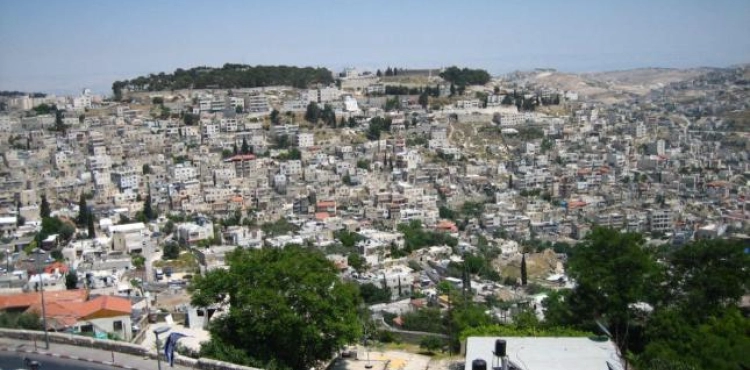RAMALLAH _ Palestine News Network
The Israeli High Court on Wednesday adjourned a petition by residents of the Silwan neighbourhood of southern Jerusalem to prevent the evacuation of 700 Palestinians from the neighborhood, the Hebrew daily Ha´aretz reported Thursday morning.
According to the Arab newspaper, the Israeli court allowed the extremist right-wing organization "Ateret Kohnim" to evacuate these residents, although the judges earlier ruled that the procedure was flawed, and questions were raised about the transfer of land to the organization.
The petition was filed by 104 residents of the belly of al-Hawa area in the centre of Silwan, against their eviction from the site, where, until 1938, Jewish immigrants from Yemen resided.
The district was created by the "Stop Banbinty ", which was registered in 1899 at the Sharia Court in Jerusalem, until it was approved in 2001 by the Israeli Central Court in Jerusalem to appoint 3 members of the association "Aterert kohnim " Trustees of the Waqf, and in 2002 the Public Trustee of the Department of For the Israeli judiciary to transfer land in the neighbourhood to the Jewish Waqf, which has made the association promoting the Judaization of East Jerusalem the actual owner of homes where some 70 Palestinian families live, according to the newspaper.
Since then, it has been conducting legal proceedings to evacuate families, two of which have already been expelled from their homes where the Yemeni synagogue was based.
The petitioners said: "The decision of the general guardian of the property to hand over the land on which they live for the settlers was a mistake, because the Yemeni waqf had the rights in the buildings in the neighbourhood, but not the land itself, because the land was the kind called Miri, which specified the Ottoman law that it could not be stopped for anyone but By a special order of the Sultan, which is not issued in this case.
During the petition, they explained that the buildings built on the ground at the end of the 19th century had been destroyed before the establishment of the "occupying Power", that the Jewish Waqf had no other rights there.
The petitioners submitted a view from the general custodian of the property concerning the Islamic Waqf´s request for land rights in the Sheikh Jarrah neighbourhood, which the Guardian rejected as a claim to be the land of Miri.
According to the Hebrew newspaper, the Israeli lawyer, "state ", has made a number of arguments, claiming that the remains of the ghetto still exist, and then claiming that, despite the land (Miri), it could not be stopped, and then claimed that the Jordanian authorities had changed the classification of the land inside Jerusalem, so it was no longer the land of Miri.
The petitioners showed before the court that the maps relied upon by the "State-Israel " to claim that Silwan was part of Jordan´s Jerusalem were erroneous.
The court held long discussions on the land and defined it, and judge Tambourine Brak asked why the public Guardian had transferred the land to the settlers without having examined who was living on it and informed them of his decision.
The judges refrained from determining whether the land (Miri), but indicated that its definition gave rise to difficulties, and the State changed its position on the matter, until they finally decided that, despite the defects found in the case, there was no justification for interfering with the decision of the guardian of the property, because the difficulties were inherent E in the legal order, not as a result of the trustee´s discretion.
Finally, it was acknowledged that the magistrate courts, which would deal with the eviction files, would have to decide on factual questions concerning the type of land.












